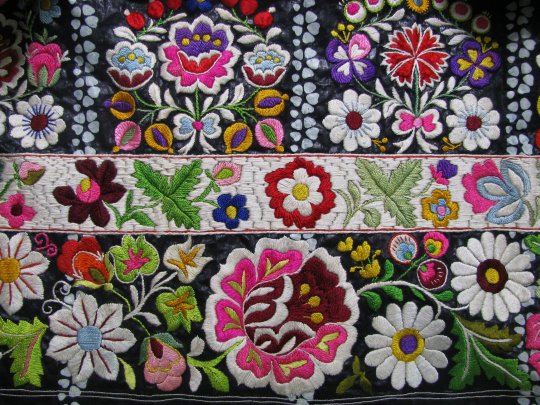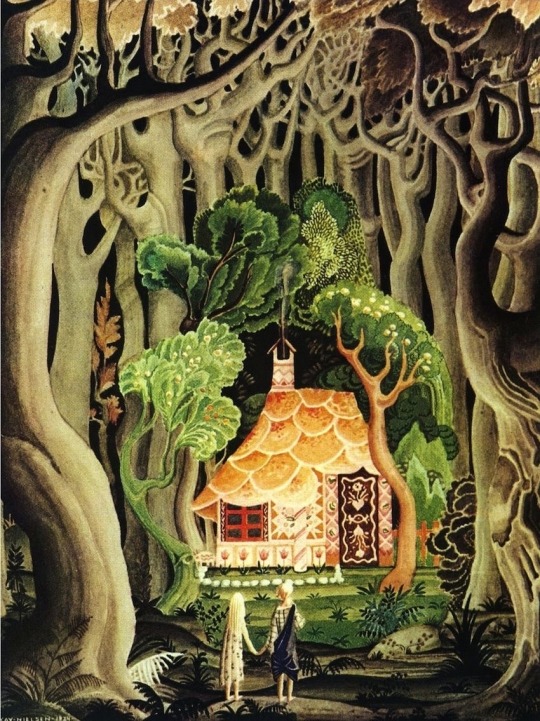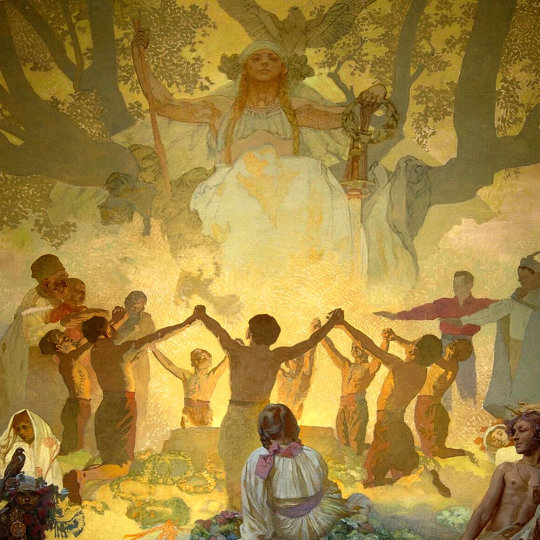#SymbolSpeak
Text

Symbols of the Ancestors from folk embroidery and weaving, Belarus, drawing by M.S. Katsar.
- Image source - MagPie (aka Olga Stanton)
#ancestors alive!#what is remembered lives#memory & spirit of place#ancient ways#sacred ways#folkways#love#life#traditions#past times#symbols#SymbolSpeak#embroidery#weaving#Belarus#M.S. Katsar#drawing#sewing#stitching
154 notes
·
View notes
Text

FERNAND KHNOPFF
7 notes
·
View notes
Text
0 notes
Text

Author: Helene Cincebeaux
"Moravian Slovak wedding apron; satin stitch embroidery on batik chintz, made about 1920 possibly in Milotice near Kyjov.
My great aunt said it took a whole winter to make such an apron; she said they made a sketch on paper and then just started embroidering. Each one is a masterpiece made by village women who were true artists - bringing the flowers of their garden to bloom on their aprons all year long.
The white band is intricately embroidered and I love that nothing has to match - they just tossed in what felt right!"
#Folkways#Ancient Ways#Culture#Tradition#Slovak#Moravia#Moravian Slovak#wedding apron#satin stitch#embroidery#chintz#ca 1920#masterpiece#village women#art and soul#heart and soul#SymbolSpeak#AdoraFlora#flowers#blooms#apron#What is Remembered Lives
20 notes
·
View notes
Text

“The work of the eyes is done.
Go now and do the heart-work on the images imprisoned
within you.”
― Rainer Maria Rilke
Artwork by Serbian painter, Vladimir Dunjić
#Vladimir Dunjić#artwork#art and soul#SymbolSpeak#Rainer Maria Rilke#seeing#vision#eyes#heart-work#images#heart and soul#imagika#inspiration
18 notes
·
View notes
Text

The Geneaology Tree by Vladimir Kush
Like many other cultures, the ancient Slavs envisioned a great and sacred Tree at the center of their Cosmos, an Oak whose great span anchored many planes of existence, with branches spanning into the Heavens and roots running deep into the Underworld.
#The Geneaology Tree#Vladimir Kush#art and soul#SymbolSpeak#Sacred Tree#Cosmos#Oak#ancient ways#sacred ways#Underworld#dreams#Ancestors Alive!#Memory & Spirit of Place#What is Remembered Lives
11 notes
·
View notes
Text

Winter Scene Of Totem Poles In Stanley Park, Vancouver, 1964
I-09679 BC Archives
#Totem Poles#Winter#Stanley Park#Vancouver#1964#SymbolSpeak#Ancient Ways#Sacred Ways#BC Archives#Vintage Photography#BC#Imagika
5 notes
·
View notes
Text

The Owl Witch by Natasa Ilincic
As the Northern Hemisphere moves towards the dark half of the year and the coming of the Cailleach, it is interesting to note the various roles the owl plays in folklore.
Very often considered a harbinger of death, this is not always the case, and, indeed, the death or ending of one way of life may be the beginning of another, so surface symbolism may belie a deeper meaning.
~ Circle Stories
#Owl Witch#Natasa Ilincic#ancient ways#sacred ways#Ancestors Alive!#folkways#myth#stories#Cailleach#Ireland#SymbolSpeak#Circle Stories#Jane Brideson#Imagika#art and soul#heart and soul#art#owl#woman#Samhain
51 notes
·
View notes
Text
There are hidden Pagan teachings in many of the fairy tales and I'll tell you what to look for hidden in Hansel and Gretel...
In it we see the Pagan cycle of the seasons: Hansel represents the youthful grain god known in Slavic lore as Jarillo, Lado or Kresnik, accompanied by Gretel, the maiden of spring who is the Slavic goddess known as Jarilla, Lada or Vesna. These deities were twin siblings and in their maturity become divine spouses.
To recognize the Pagan symbols of the seasons we need to look back at least 6,000 to 8,000 years. The original herding cultures had only two seasons running from May 1st/ May 5th (the Slavic St. George’s Day, Jurjevo, or Beltaine) to the end of October/beginning of November (Dzady or Samhain.) Later it divided into three seasons starting February 2nd, to the Summer Solstice and then end of October/ beginning of November (this is when the concept of the triple goddess and triple god developed, as a seasonal representation of Maiden, Mother, Crone, but very little is remembered today of the triple god.) Eventually settling out into the modern four seasons divided at the Spring Equinox, Summer Solstice, Autumn Equinox and Winter Solstice. This means that the concept of the “new year” started in the spring on May 1st/ May 5th, then became perceived as February 2nd, then on the Spring Equinox (March 15th) and eventually settled on the Winter Solstice, until the Romans moved it a few days to January 1st. This gives us a strange similarity of many springtime traditions to winter solstice traditions/ New Year celebrations. For now we’ll just focus on the springtime god and goddess represented by Hansel and Gretel.
These two siblings were sent forth because in the privation of winter they had no more food to eat in the house. Their father leads them into the forest and they build a large fire “as high as a little hill” where they fall asleep and their father leaves them. This is the Bel fires lit in the spring and alternately the Koliada or Yule fire of the Solstice. In the Russian variation, we can see the triple goddess, where the young Hansel and Gretel are sent by their mother to their old “grandmother” who lives in the forest. This elderly woman is the ancient goddess of winter, known in Slavic lands by the name of Baba Jaga, Morana or Mara.
The symbolism of the bread crumbs to try to lead the children back home connect to the grain god and the last “crumbs” from winter. When they are finally lost with no bread to guide them back, in some variations, the children are led by a “snow white” bird to the witch’s gingerbread house which the youths begin to eat. Understand that all birds, but especially white birds, were known to be messengers of the Goddess, while the honey-sweetened gingerbread represents the sacrificial food of the season offered to the deities. In some variations when the witch asks who is nibbling on her house, Gretel answers, “The wind, the wind.” This makes more sense when you know that the Spring Goddess’s name of Vesna, means “breeze,” as in the breezes that bring springtime. Eventually, the old witch catches the children, Hansel is put in a cage and Gretel must slave away doing chores. The girl eventually destroys the old witch by tricking her and shoving her into the oven.
The oven as a symbol of transformation is seen going back to the Baden culture dating around 3000 BCE. On my trip to Zagreb, Croatia, in the museum I observed small votive pottery sculptures of ovens that were found in temples and burials around the Slavic lands. Why ovens? This sacred image from five thousand years ago holds the transformative property of transmuting grain into life-nurturing bread. It is the same seasonal cycle that is mentioned in John Barleycorn and other Pagan songs, “Corn and grain, corn and grain, all that dies will rise again.” By “killing” the old witch of winter, Gretel releases young Hansel from his cage and the siblings carry off the witch’s “treasure” bringing the prosperity of spring! In some variations of the tale, they are led back home by a white duck (symbol of the Goddess) and in a Romanian version, the boy gets turns into a cuckoo, a bird that symbolizes the return of spring.
Gingerbread’s earliest variation was made with honey. This important ingredient is sacred to the God and Goddess going back to hunter-gatherer times. Honey cookies were made for the Winter Solstice in the round shape of the sun (and the spring holidays too, but that’s a whole ‘nother essay!) Later oriental spices were added and it became what is known as gingerbread, but the honey was the most important ingredient. The names reflecting this treat’s ancient origins would start with med (meaning honey), such as medenjaci in Croatia and medenjaki in Slovenia. The Czech and Slovak variation of pernik, or pierniczki in Poland, and pryaniki in Russia come from variations on pryany which means “spicy.”
(copyright 2018 Patricia Robin Woodruff)

#hansel and gretel#folktales#folklore#fairy tales#once upon a time#pagan#lore#ancient ways#SymbolSpeak#witch#wheel of the year#kay nielsen#illustration#art#hidden meaning
23 notes
·
View notes
Text

An effigy of Mokoš or Mokošín from Pardubický kraj, Czechia (Czech Republic) - Goddess protector of women, and symbolism of any kind of Fertility.
#Mokoš#Mokošín#Pardubický kraj#Czechia#Czech Republic#Goddess#Ancient Ways#Sacred Ways#Ancestors Alive!#What is Remembered Lives#Memory & Spirit of Place#SymbolSpeak#women#Fertility#protector
14 notes
·
View notes
Text

Juneau, Alaska
5 notes
·
View notes
Text

"The Oath of Omladina under the Slavic Linden Tree is the eighteenth of twenty paintings from the Slav Epic and by this stage the artist is closing on the present day.
Having initially started way back in the 6th to 8th century with the first installment, Slavs in their Original Homeland, Mucha would work his way through a collection of significant battles and cultural events in order to explain the key moments in the lives of the Slavic population. He would now discuss a youth organisation known as Omladina who appeared in the 1890's, which was actually about when Mucha first came up with the idea of the Slav Epic project. This organisation would promote nationalist ideas and urged a revival of Czech values but they were later arrested and imprisoned after a short trial. The members of this group are captured within this painting, swearing allegiance to goddess Slavia in a patriotic gesture which allows them to join the group officially.
Slavia herself sits in the top of the composition within a tree which symbolises health and strength. The prospective members of the group carry out their tasks in order to become accepted into the group. The overall atmosphere is one of happiness and celebration, a far cry from the realities of being imprisoned in the years that followed. The strong tree which reaches out across the full width of the artwork will remind many of the symbolic value of the Tree of Life which appears in many different religious scriptures and was also famously the inspiration for a memorable artwork by Austrian painter, Gustav Klimt. There is certainly a joyous atmosphere which is deeply contrasted with other parts of the series, such as battle scenes and depictions of key figures approaching death."
#Mucha#alphonse mucha#The Oath of Omladina#Slavic#folkways#folklore#Ancient Ways#Sacred Ways#Linden Tree#imagika#art#Slavic Epic#SymbolSpeak#Slavia#Life
42 notes
·
View notes
Text

The Spirits Visit by Bill Worrell
#The Spirits Visit#Bill Worrell#art and soul#sculpture#crows#ravens#symbolspeak#messengers#messages#mighty companions#Ancestors Alive!#Spirit World#Between The World
4 notes
·
View notes
Text

Triskelles
#triskelle#SymbolSpeak#spiral#Toulhoat#sacred ways#ancient ways#celts#Celtic#Bretagne#heart and soul#love#life
2 notes
·
View notes
Text

Crow Catcher, Leonora Carrington
3 notes
·
View notes
Text

Serpentarium
Pencil and acrylics on panel
12" x 12"
2012
Copyright Patricia Ariel
14 notes
·
View notes